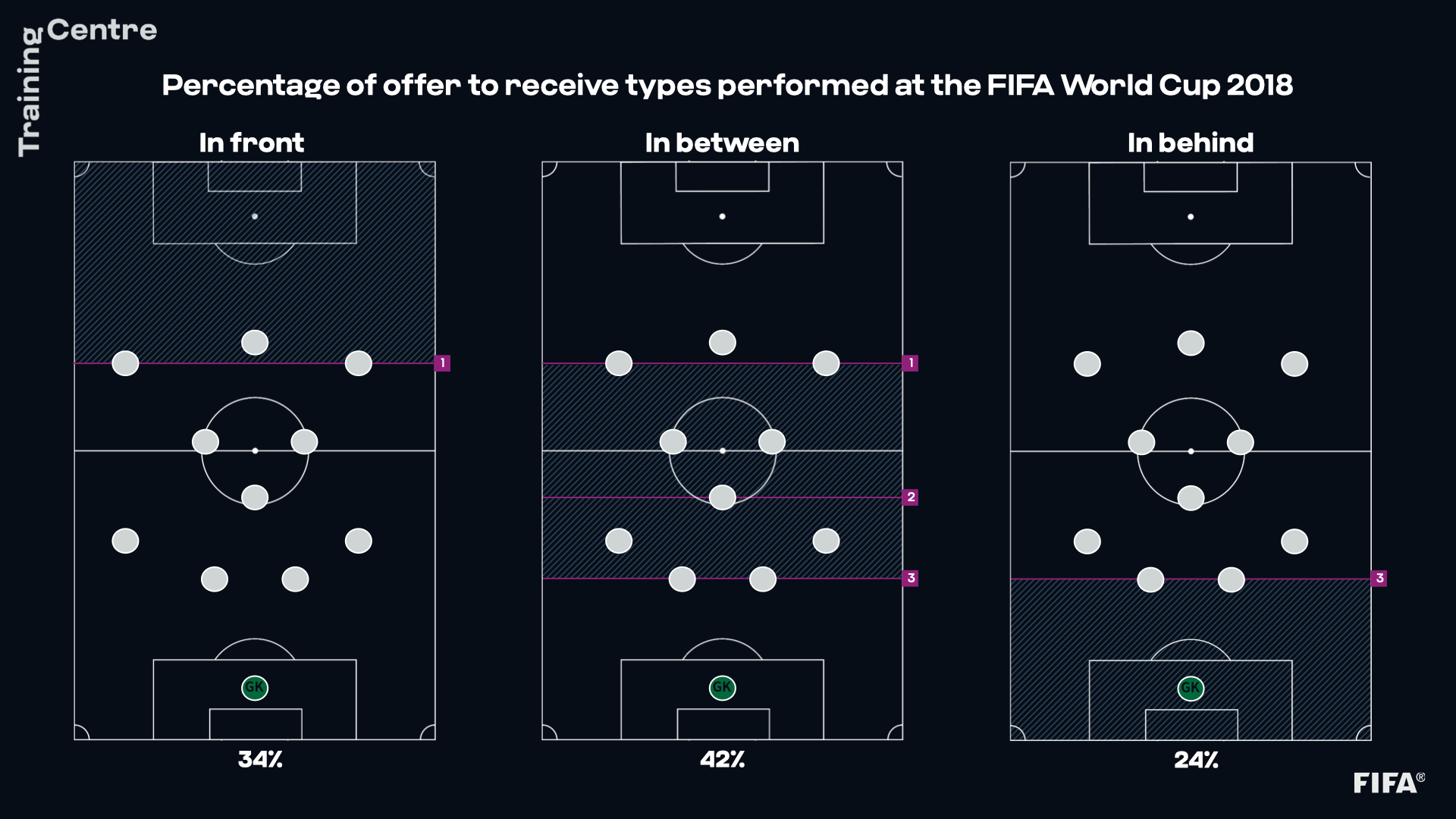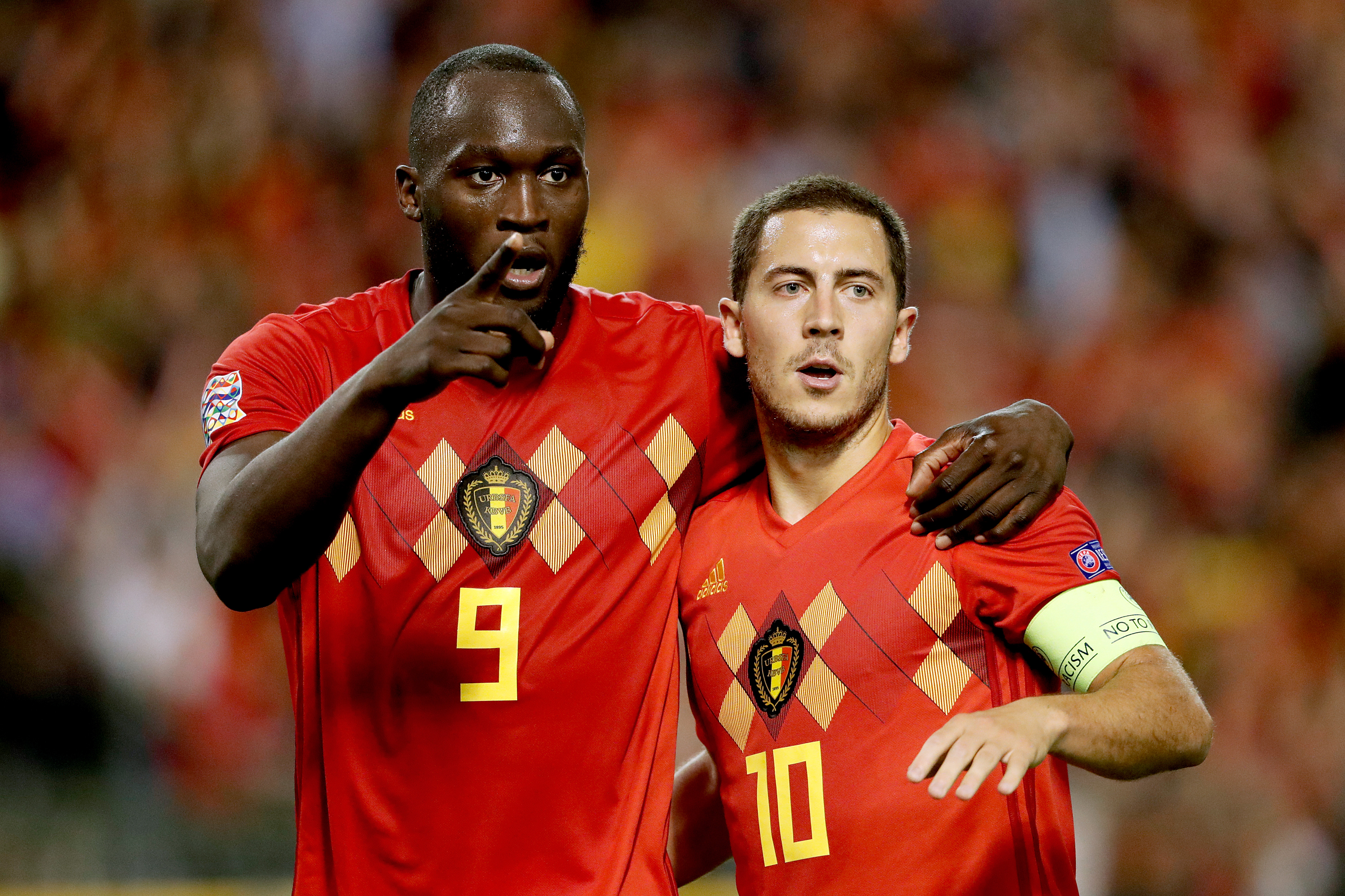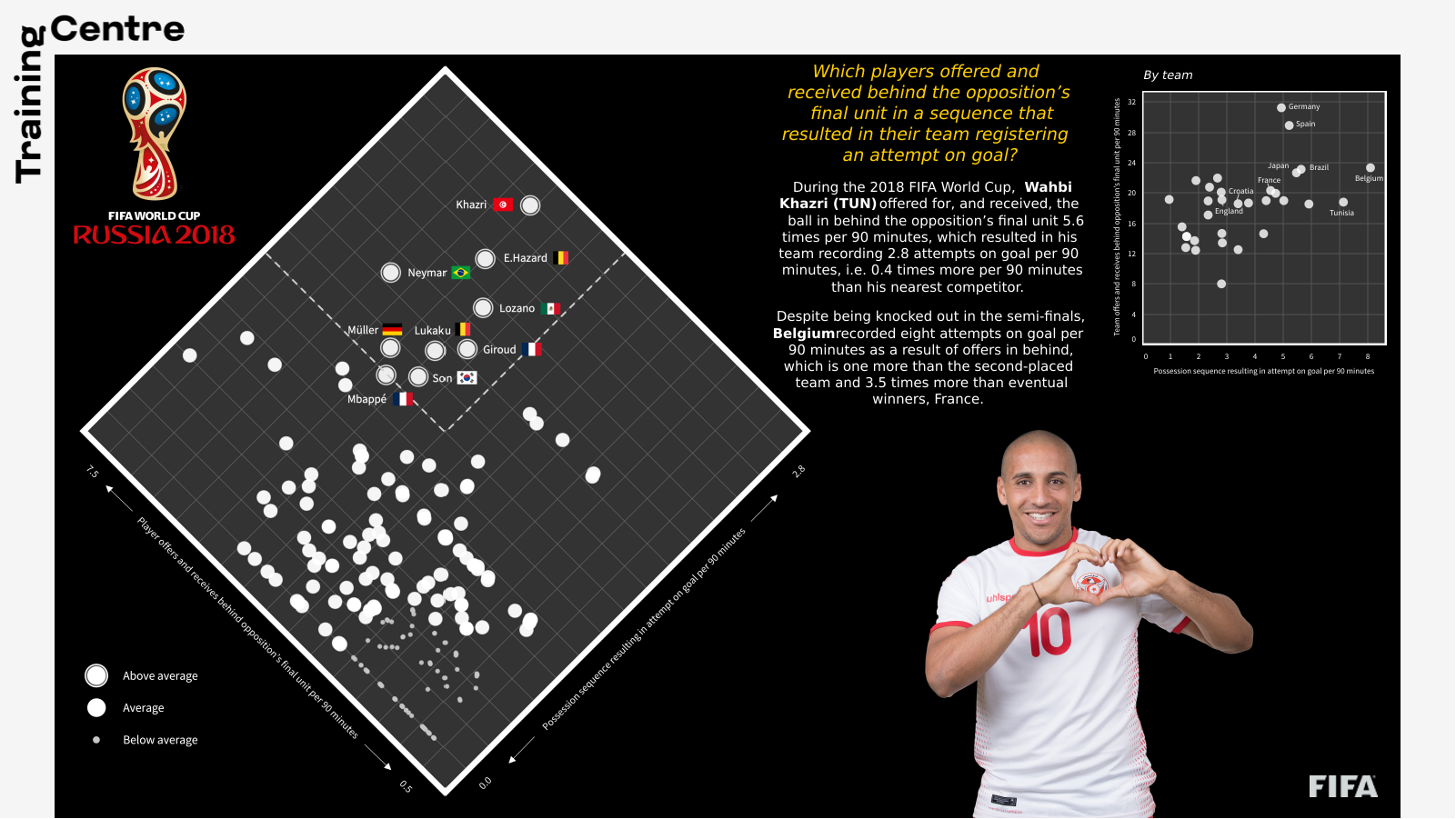The key question that we wish to explore in this article is what the player is doing when they are not on the ball.
One of the ways FIFA is looking to answer this question is by investigating player behaviours off the ball and this is where offering to receive comes into play.
Offering to receive refers to the actions a player makes off the ball when their team are in possession. More specifically, the concept relates to whether the player’s intention is to receive the ball from a team-mate and continue or complete the possession phase.
An in-game example of offering to receive would be when a central midfielder performs a movement towards the central defenders to request the ball into feet. Another example would be an attacking player signalling behind the opposition’s defensive line in anticipation of a pass into the space they are seeking to exploit.
Understanding player and team behaviour off the ball allows us to evaluate performance in a way we never have before.
Offering to receive is defined as a clear and deliberate action performed in an attempt to receive the ball, which has an impact on the current in-possession phase. This action can be via a clear and obvious signal or a movement (including a change in body shape).
An offer is attributed to a player when they demonstrate this behaviour, regardless of whether they receive the ball or not.
Additionally, information such as the start and end locations of the offer, where the player performs the offer in relation to the opposition team units and if the offer occurs inside or outside the opposition team shape are all obtained during the data collection process.
As an example, the image below (Graphic 3) displays where offers occurred in relation to the opposition team units at the 2018 FIFA World Cup™.


Placing offering to receive under the microscope at the 2018 FIFA World Cup offers us a better understanding of certain trends amongst the participating teams.
For example, can we identify how teams seek to control, impact, and dictate their phases of possession and in which areas of the pitch? The following statistics have been normalised per 90 minutes to account for the difference in the number of matches played by the participating teams at the tournament.
Spain (617), Germany (580) and Switzerland (549) comprised the top three teams with the most offers per 90 minutes. It is worth noting that seven of the leading ten teams in this particular ranking progressed to the knockout stage.
Notably, eventual winners, France (366), ranked 21st in the 32-team line-up, which reflects their preference to concede possession and seek to exploit their strength on the counter-attack.
The amount of time a team spend in possession automatically influences their ability to offer to receive. By factoring in the time that the participating teams spent in possession, we begin to gain an insight into the sides that seek to positively affect possession when the opportunity arises.
Korea Republic (22.1), IR Iran (21.0) and Morocco (20.9) all demonstrated a strong desire to affect possession and receive the ball, ranking as the top three nations for offers to receive per minute of possession.
Interestingly, the cluster of teams situated in the bottom left corner of the graphic below, a position that reflects fewer offers to receive per minute, include winners, France (16.5), and Group F victors, Sweden (13.7). Indeed, five of the 11 bottom-performing teams in this metric qualified for the knockout rounds.

Exploiting the space in behind the opposition’s defensive line is considered to be an invaluable tactical approach when attempting to break down the opposition’s defensive shape. Attacking players making runs behind the last line of defence represents a highly productive method to create goalscoring opportunities. Measuring the offers to receive in behind provides us with an improved understanding of which teams adopt this approach and enjoy the greatest success.
“It’s extremely important that attacking players constantly move between and behind opposition defenders in order to disrupt them and present them with some difficult decisions. This forces the defensive line to make a quick decision about whether to follow the attacking players or hand them over from defender to defender. Off-the-ball movement serves to create space and open up passing lines between defenders. This explains why some teams nowadays do not operate with a so-called static number 9 and prefer to set up with a roaming attacking player who drops in and out of the defensive line” – Jürgen Klinsmann.
At the 2018 FIFA World Cup Russia™, FIFA investigated the teams and players that offered to receive in behind the opposition’s final unit, received possession of the ball and generated an attempt on goal for their team.
From a team perspective, Germany (31) and Spain (29) led the way in terms of the number of offers in behind the opposition’s defensive line per 90 minutes. It is worth noting that the tournament winners, France (20), offered and received the ball in this area almost one third less than their leading competitors, but interestingly generated a similar number of attempts on goal per 90 minutes (4.5) when offering and receiving behind the final unit, which indicates their superior efficiency in front of goal.
Fellow finalists Croatia (3.4) were less successful at generating attempts on goal, despite offering for, and receiving, the ball in behind at a similar frequency to France (18.6). Belgium (8.1) and Tunisia (7.1) ranked as the most efficient sides when offering in behind. The Red Devils concluded the possession phase with an attempt on goal eight times per 90 minutes following offers in behind, which is once more than any other team in the tournament, and 3.5 times more than winners France.
Several players representing teams that reached the tournament knockout stages feature amongst the top performers when it comes to offers in behind that resulted in their team registering an attempt on goal. Tunisia’s Wahbi Khaziri was the most efficient player in this department, offering for, and receiving, the ball in behind the opposition’s final unit 5.6 times, with these movements resulting in 2.8 attempts on goal per 90 minutes for the Eagles of Carthage.
Khaziri (2.8) registered the best offers-in-behind-per-attempt-on-goal ratio in the competition, recording 0.4 per 90 minutes more than his nearest pursuer. Interestingly, Eden Hazard (2.4) and Romelu Lukaku (1.7) were both standout performers in this area and were key to Belgium’s success behind the opposition’s defensive line.

The analysis of in-possession and off-the-ball events significantly enhances the level of detail and information captured on both a team and individual level. Studying player behaviour and movements when out of possession offers us a clear insight into the reasoning behind the particular strategies adopted by teams and players. Do the best players offer to receive? Where on the pitch do these offers occur? Are offers recognised by team-mates, i.e. do players receive the ball after making an offer? When a player offers to receive, do such movements result in goalscoring opportunities? These are just some of the many questions that we are able to explore through our analysis of offers to receive.











